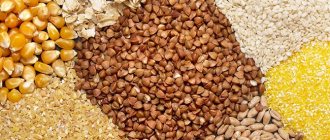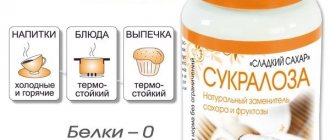Rice is the basis of the diet of the population of many countries. It is easily digestible, goes well with various foods and is included in many dishes. The difficulty is that the glycemic index of traditional white milled rice is about 70, while the grain contains almost no fiber. But there are other varieties with a lower glycemic index - brown, brown, wild, white parboiled rice. So can you eat rice if you have type 1 and type 2 diabetes?
Diabetes and rice cereal
Cereals are very common. In certain countries it is generally considered a national dish. Despite the lack of fiber in it, it is easily digestible. Various dishes are prepared from it, which are included in various diets. That is why the product is very popular among nutritionists. The benefits are due to its composition. The product is also tasty and does not affect the increase in glucose.
The cereal contains the following components:
- proteins;
- different fats;
- carbohydrates.
The calorie content of the product is low and amounts to 340 kcal (100 g). It does not contain simple carbohydrates. As for complex compounds, there are plenty of them. They can never lead to a spike in glucose.
Rice contains vitamins. They improve energy production and have a beneficial effect on the nervous system. Amino acids promote cell regeneration. The absence of a protein such as gluten eliminates the risk of allergies.
There is practically no salt in rice. Therefore, experts recommend using it for people who are faced with a problem such as fluid retention. Cereals are rich in various microelements. As for fiber, brown rice has more of it. That is why it is recommended for gastrointestinal pathologies. Cereals have an enveloping effect that helps relieve inflammation. So, can diabetics eat rice, and which one should they prefer?
Rice for diabetes: can type 2 diabetics eat rice?
For a person with type 2 diabetes, it is undesirable to consume foods that lead to a sharp increase in blood sugar. One of the most controversial products in this sense was and remains rice.
Diabetes and rice
Rice is one of the most common, and in some countries, the most common food product. The product is easily digestible, but has almost no fiber. Rice cereals are used in many different dishes, which are recommended by nutritionists.
One hundred grams of rice contains:
- Proteins – 7 g
- Fat – 0.6 g
- Carbohydrate compounds – 77.3 g
- Calories – 340 kcal.
Rice cereals do not contain simple carbohydrates, but there are sufficient amounts of complex carbohydrates. Complex carbohydrates do not have a negative effect on diabetics, that is, they do not experience sudden spikes in blood glucose levels.
Rice also contains a large amount of B vitamins, namely thiamine, riboflavin, B6 and niacin. These substances contribute to the normal functioning of the nervous system and are directly involved in the body's energy production. Rice cereal also has a lot of amino acids, with the help of which new cells arise.
Rice proteins do not contain gluten, a protein that can cause allergic reactions.
Rice cereal has almost no salt, which is why doctors advise people who have problems with water retention in their bodies to consume cereal. Cereals contain potassium, which reduces the effects of salt entering the body. Rice contains important components such as calcium, iodine, iron, zinc and phosphorus.
Rice contains 4.5% dietary fiber. Brown rice has the most fiber and white rice the least. Brown rice is most useful for diseases of the gastrointestinal tract, since the components of rice have an enveloping effect, helping to relieve the inflammatory process.
Types of rice
There are several types of rice grains, which differ in how they are obtained. All types of rice have different taste, color and taste. There are 3 main types:
- White rice
- Brown rice
- Parboiled rice.
People suffering from diabetes are advised to avoid eating white rice cereal.
When brown rice is processed, the husk layer is not removed, so the bran shell remains in place. It is the husk that gives the rice its brown color.
Brown risk contains a lot of vitamins, minerals, dietary fiber and saturated fatty acids. This rice is especially useful for patients with diabetes. However, eating brown rice is not recommended for diabetics who are overweight.
Before reaching the consumer's table, white rice undergoes several stages of processing, as a result of which its beneficial properties are reduced and it acquires a white color and smooth texture. This rice is available in any store. The groats can be medium-grained, round-grained or long-grained. White rice has many healthy ingredients, but is inferior to brown and parboiled rice.
Parboiled rice is created through the use of steam. During steaming, rice improves its properties. After the procedure, the rice is dried and polished. As a result, the grains become translucent and acquire a yellow tint.
After steaming rice, 4/5 of the beneficial properties from the bran shell are transferred to the grains. Therefore, despite the removal of the husk, most of the beneficial properties remain.
Brown rice for diabetes
Brown rice is regular rice that has not been completely refined. After processing, brown rice contains husks and bran. This means that the beneficial properties remain in place and this type of rice can be consumed by diabetics.
The cereal has a huge amount of vitamin B1, which is important for the proper functioning of the nervous and cardiovascular systems. Moreover, rice contains a complex of vitamins, micro- and macroelements, as well as fiber, and in combination with nutrition, vitamins for diabetics are also great.
Doctors traditionally recommend brown rice for type 2 diabetes, since its dietary fiber lowers blood sugar levels, while simple carbohydrates in foods increase it. Rice contains folic acid, which helps keep sugar levels normal.
Wild rice for diabetes
Wild rice or water tsitsania is known to everyone as the undisputed leader among cereal crops in terms of the amount of beneficial nutrients, especially for type 2 diabetics. Wild rice contains:
- Protein
- 18 amino acids
- Alimentary fiber
- Vitamin B
- Zinc
- Magnesium
- Manganese
- Sodium
The product contains no saturated fat and cholesterol. Wild rice contains 5 times more folic acid than brown rice. For diabetes mellitus, this type of rice can be consumed by obese people.
The calorie content of wild rice is 101 Kcal/100 g. The high fiber content ensures effective cleansing of the body from toxins and toxic elements.
Parboiled rice for type 2 diabetes
Special processing of rice grains before steam grinding moves up to 80% of the beneficial components into the grain from the shell. As a result, the consumer receives a product containing vitamins PP, B and E, micro- and macroelements, among them:
- Potassium
- Phosphorus
- Magnesium
- Iron
- Copper
- Selenium
Rice also contains starch, which is slowly digested by the body, thereby facilitating the gradual absorption of sugar into the blood. Therefore, steamed rice can be used for type 2 diabetes, it helps normalize blood sugar levels. Parboiled rice can be included in a diabetic's diet.
Variety of cereals
Today, rice is divided into several types (basmati, sea, black and others). Each type of product has a specific taste and color. Thus, there are 3 types of rice:
- White. The cereal goes through several stages of processing, resulting in a smooth structure and characteristic white color. Of course, the beneficial properties are significantly reduced after this. Cereals have different shapes and sizes. Presented on the market in a wide range.
- Brown. During production, the husk is removed, but the bran membrane is not affected. It is this that gives the cereal its characteristic color. Unpolished rice contains minerals and elements that are beneficial for illness. The exception is diabetics who tend to be overweight.
- Steamed. During processing, the grain is exposed to steam. Compliance with technology allows you to improve its beneficial properties. A characteristic feature of the cereal is the translucency of the grains and a yellowish tint. It needs to be steamed very carefully.
Important! If you have an illness, doctors recommend avoiding consumption of white cereals, as they are harmful. It is better to opt for other products.
The product is presented in a wide range
Negative effects of white rice on diabetics
The only grain that patients should avoid is white rice. This is the most common variety of rice. White grains have positive taste, but the level of nutrients in this variety is much lower.
Negative properties of white rice for diabetes:
- White rice can hardly be called diabetic, as it increases the concentration of glucose and provokes type 2 diabetes.
- This product disrupts the functioning of the liver, stomach and other organs.
- This is a high-calorie product that contains 73 g of simple carbohydrates per 100 g of cereal. By comparison, the same amount of brown rice contains 23 grams of simple carbohydrates.
- During the processing of white rice, harmful additives are used, such as flavor enhancers.
That is why it is better for patients with diabetes to avoid eating white cereals.
Brown rice
This is a product that has not been fully purified. Ultimately, it retains the bran and husk. They contain useful substances that have beneficial properties. As a result, the cereal retains its value. Thanks to these features, brown rice is recommended for diabetics.
The product contains vitamin B1 in excessive amounts. It takes part in the functioning of some body systems. Cereals contain other vitamins, fiber, macro- and microelements. This product is recommended for consumption in diabetes, since the dietary fiber it contains lowers glucose. Thanks to folic acid, sugar will be normal.
The product is indicated for diabetics
Several recipes with rice
In type 2 diabetes, diet is the main component of therapy. Dishes containing rice are welcome on the patient's table, so it is very important to make them appetizing, tasty and aromatic.
Soup
You can make a wonderful soup with this grain.
To prepare you will need:
- cauliflower – 300 g;
- brown or brown rice – 70 g;
- bulb onions;
- sour cream – 25 g;
- butter;
- parsley dill.
Peel the onion, chop it, put it in a frying pan. Add butter, rice and fry. The resulting mixture is placed in a pan of boiling salted water. The cereal is cooked until half cooked, after which chopped pieces of cauliflower are added to the soup. When the soup is cooked, five minutes before turning off the heat, add a spoonful of sour cream and herbs.
Meatballs
You can please the sick person with fish balls and brown rice. To prepare, you need to: grind 400 g of lean fish fillet in a meat grinder along with a peeled onion. Add an egg, soaked rye bread crust, and salt to the resulting minced meat. Cook rice cereal separately and mix with minced meat. Roll into small balls, roll in breadcrumbs and simmer in water or tomato sauce.
Wild rice
This product is also known as water tsitsania - a popular and well-known cereal crop that contains many nutritional and beneficial elements. Therefore, the product is indicated for diabetics. It contains protein, zinc and other substances.
The cereal contains no cholesterol and no saturated fat. As for folic acid, it is present in excessive quantities. Cereals are indicated for diabetics who suffer from excess weight and tend to rapidly gain it. Its calorie content is only 101 Kcal (100g). Fiber, in turn, removes toxins and waste from the body.
Contraindications and indications
Processed white cereals, which contain simple carbohydrates, should be excluded from a diabetic's diet because they increase sugar levels, the possibility of weight gain, complicate treatment and have a negative effect on digestive processes.
Also, you should not overuse a dish such as pilaf, even if it is prepared according to all the rules, it is still considered fatty enough for a diabetic. Unpolished grains are recommended for consumption; they should be included in the diet; healthy dishes (rice porridge, soups, stews and others) prepared from brown, brown, red, and wild varieties. People with diabetes can eat this grain crop, and properly selected types will have a beneficial effect on the body.
Parboiled rice
Under the influence of steam over a certain period of time, most of the beneficial substances are transported from the shell to the grain. As a result of consuming rice, the body receives many useful elements, as well as a vitamin complex. The product is rich in various substances.
An equally important component of the product is starch. It is digested very slowly. This promotes slow absorption of glucose into the blood. In this regard, rice is indicated for pathology, as it normalizes sugar. Steamed cereal is indicated for all patients, without exception.
Delicious dishes are prepared from it
Brown variety
The brown variety is considered the best alternative for diabetes. The advantages of the product are as follows:
- average calorie content;
- average glycemic index;
- fast saturation;
- lack of carbohydrates in the composition.
The cereal contains a large amount of amino acids and dietary fiber, as well as essential microelements, such as selenium.
All this makes brown rice a tasty and healthy substitute for white cereals.
This variety is characterized by minimal processing, which preserves all the beneficial substances. While parboiled white rice increases sugar levels, the brown variety does not have the same effect on the body.
This product is well absorbed by the body, and also saturates quickly and for a long time, which is very important when fighting excess weight. Thanks to this feature, brown rice is the most important component of any diet.
Dish recipes
Today you can find recipes for dishes that are prepared using rice or adding it to them. For diabetics, a dessert made from cereals and fruits would be a good option. For malt, stevia or other naturally occurring sweeteners are used.
Ingredients:
- brown rice – 200g;
- apples – 2 pcs.;
- purified water – 0.5 l;
- cinnamon;
- sweetener.
Rinse the cereal thoroughly and cook for 50 minutes. until ready. Add sweetener to taste a few minutes before removing the porridge from the stove. Peel the apples and then cut into cubes. Add rice and season with cinnamon. Place the dish in the refrigerator for 30 minutes. Sweet rice should be served chilled.
In addition, you can prepare pilaf, rice and milk (milk) soup, noodles, milk rice or other dishes that are completely suitable for diabetics. Cereals are in no way inferior to oatmeal in terms of benefits. But in order for the product not to cause harm, you need to know how to prepare and eat it correctly. A slow cooker would be a good option. With its help, it will be possible to preserve the usefulness of cereals.
Is it possible to eat rice if you have diabetes and pregnancy? It’s very simple. Of course yes. You can eat a diabetic dish if you are obese. It is not able to increase glucose levels. The gestational index is very low. And it’s worth remembering that diabetes is never ex-diabetes. Therefore, the diet must be followed throughout life.
Interesting:
- What cereals can you eat if you are diagnosed with type 2 diabetes mellitus, types of cereals that are considered beneficial for the diet for diabetes
- Simple recipes for millet porridge for diabetes: the benefits and negative effects of millet on the body, the composition of the cereal
- Is it possible to eat wheat porridge if you have type 2 diabetes mellitus or not, beneficial properties, contraindications, chemical composition and side effects
- Is it possible or not to have corn porridge for type 2 diabetes: methods for preparing corn
- How to choose pasta if you are diagnosed with type 2 diabetes, whether or not you can include it in your diet, how often
- Is it possible or not to eat eggs if you are diagnosed with type 2 diabetes mellitus, benefits, potential harm and contraindications
- Is it possible or not to eat cottage cheese if you are diagnosed with type 2 diabetes?
Glycemic index and beneficial properties of rice
As is the case with most cereal crops, rice grains contain a lot of carbohydrates, the mass fraction of which can reach up to 60% of the total mass. This fact should be taken into account when planning a diabetic diet, because carbohydrates in this case are mostly represented by unwanted starch and dextrins. In small quantities they are harmless for diabetes, but you should not overuse rice, especially since it is also a fairly high-calorie food - up to 400 kcal per 100 grams. product.
The chemical composition of rice is of interest, since the range of substances presented is very wide and includes, in addition to micro- and macroelements, numerous nonessential and essential amino acids, as well as saturated and unsaturated fatty acids. The complex of these elements comprehensively enriches the patient’s body, replenishing their deficiency in one part or another.
Among microelements, the following components deserve special attention:
- 2.1 mg iron;
- 1.8 mg zinc;
- 3.63 mg manganese;
- 560 mcg copper;
- 912 mcg aluminum.
At the same time, the cereal in question is very rich in silicon, potassium and phosphorus, and to a lesser extent in calcium, magnesium and chlorine. As for the vitamin component of rice, the body will receive the greatest benefit due to the increased concentration of niacin, vitamin PP, alpha-tocopherol and especially choline. The latter not only plays a key role in the functioning of the nervous system and brain memory, but also actively affects carbohydrate metabolism, regulating the level of insulin in the blood (this is a very valuable property for type 2 diabetes).
Finally, the glycemic index of rice should also be indicated, since GI is usually considered as one of the basic indicators of any product when preparing a diet. In this case, this index varies from 30 to 60 units, depending on the variety of cereals.
Benefits and preparation of fireweed for diabetes
Red variety
For diabetics, it is better to choose the red variety. Red cereal has the following properties:
- normalizes glucose concentration;
- promotes weight loss;
- improves metabolism;
- increases immunity;
- normalizes the digestion process.
Thanks to a large amount of natural antioxidants, red rice helps improve regeneration, which is important for diabetes.
Due to the high content of dietary fiber, the product is indicated for digestive problems, as well as for excess weight. Effectively cleanses the body of toxins and improves immunity. It is recommended to use it for problems of the cardiovascular system.
This variety is low in calories and satisfies well without the risk of gaining extra pounds. The peculiarity of the cereal is its delicate and delicate rye taste.











